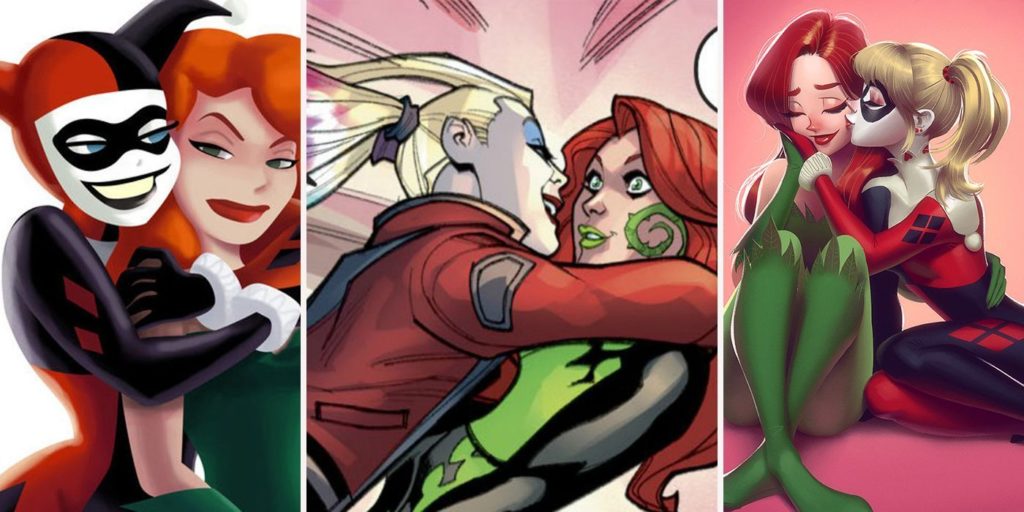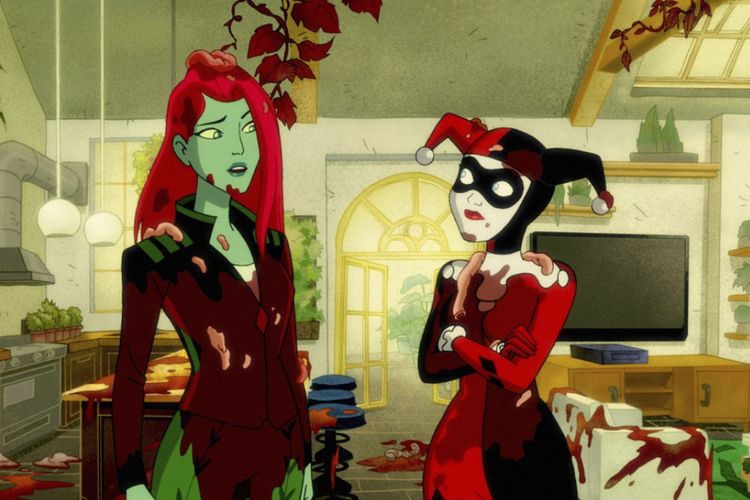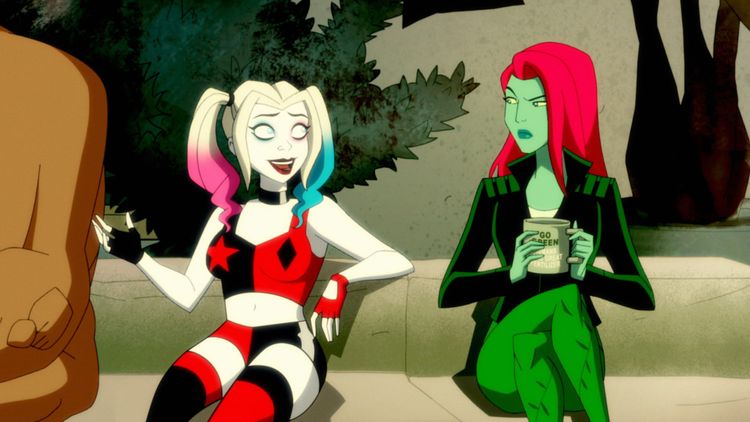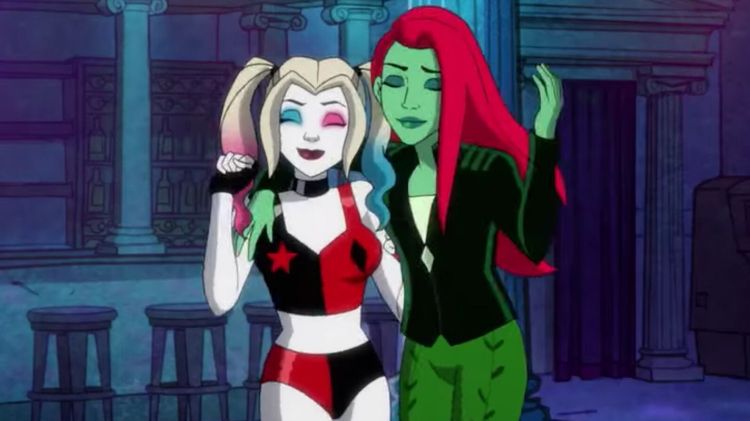The deadly duo of Harley Quinn and Poison Ivy, two of the most well-known female Batman villains, is more than simply the sirens of Gotham City. Through both an extension of other DC Comics-owned media and the canon of the comic books, their friendship has seen itself develop into something more. DC Comics immediately latched on to fans’ desire to “ship,” or see Harley Quinn and Poison Ivy as a couple. The two evildoers never planned to become romantically involved, but their mutual contempt for patriarchal social norms eventually led to a relationship that was outside of the norm. Since their relationship is complicated, it makes sense that Harley Quinn and Poison Ivy have an unusual bond.
The fact that the nature of their relationship remained ambiguous after they first met and did not have a clear definition or overtly state their relationship status contributes to both Harley Quinn and Poison Ivy’s peculiarities. Even though they explored their flirtatious interactions, DC Comics not only chose a slow-burn approach to getting to the heart of the evil women, but they also elaborated more on their characters when together.
Who Are Harley Quinn and Poison Ivy?
In Batman: The Animated Series, Harleen Quinzel, better known as her alter ego Harley Quinn, first appeared as the Joker’s henchwoman. On September 11, 1992, she made her premiere alongside the Clown Prince of Crime. She was developed by Bruce Timm and Paul Dini. She was first introduced to the series as the Joker’s mistress, and their relationship erupted in violent cruelty and dysfunction. In addition to being a well-known gymnast, Quinn, a former doctor, graduated at the top of her class and went on to receive a Ph.D. Prior to being established as a recurring character, she was intended to be a standalone character. Quinn was included into DC Comics canon with Batman: Harley Quinn #1 in October 1999.
Quinn has reclaimed the jester look as her own, with her name parodying the pun of the “Harlequin.” She has been portrayed as a key member of the Suicide Squad since 2013, and Margot Robbie later brought her to life in 2016. Despite reports that DC Films and Warner Brothers are taking a break from the character, Robbie has highlighted that she wants to return to the role at any point. In 2019, HBO Max debuted an animated series continuing the solo exploits of Quinn, voiced by Kaley Cuoco. Lake Bell later added more Pamela “Poison Ivy” Isley to the show.
Isley is a misanthropic botanist and biochemist who is poisonous to the touch, drawing inspiration in part from Nathaniel Hawthorne’s Rappaccini’s Daughter of Rappaccini’s Daughter. She draws her strength from the Green, an energy that exists on many planets and was first mentioned in Pavane by Neil Gaiman. In 1966, Sheldon Moldoff and Richard Kanigher published Batman #181, which was her first canon appearance. Several actresses have expressed interest in playing Poison Ivy in a live-action movie, but Megan Fox has been requested by fans as the next candidate. Isley, one of Batman’s most frequent foes in DC Comics and other DC Comics media, takes pride in being “an ecoterrorist of global consequence.” She is endowed with pheromones that can influence the mind, immunity to all poisons and toxins, control over all plant life, and the capacity to transfer poison with just a touch.
The History of Harley Quinn and Poison Ivy
Quinn and Isley’s relationship did not begin haphazardly or with a “love-at-first-sight” moment of insight. The inevitable encounter that day, on January 18, 1993, during the Batman: The Animated Series episode “Harley and Ivy,” marked the start of their future history. In the episode “After Quinn and the Joker break up (again),” Quinn’s desire to show the Joker that she can be just as cunning as he is leads to a museum robbery, where she meets Isley, who is trying to steal plants from the same location. In the episode “Holiday Knights” of Batman: The New Adventures from 1997, they later rejoin and brainwash Bruce “Batman” Wayne into becoming their slave.
In the 1999 film Batman: No Man’s Land, Quinn was given the assignment of killing Isley by the Joker, but the operation was foiled when Quinn was given the same drugs that Isley had in the animated series, which increased her agility and gave her immunity. Quinn found herself returning to the Joker despite Isley having offered to protect her. Later, Selina “Catwoman” Kyle joined the pair to form the Gotham City Sirens in 2009, which gave each character a stronger anti-hero arc regarding their morals. They couldn’t be classified as criminals, but they also didn’t fit the hero-heroine paradigm either. Quinn learned that Isley loved her throughout this particular comic run. Isley acknowledged that she had a sexual or platonic relationship with Quinn. In essence, the readers were free to interpret the exchange.
It was established in 2015 that Quinn and Isley were non-monogamic romantic partners. In Harley Quinn #8, Isley put a temporary stop to their relationship after Quinn requested that they move in together. Their marriage will be shown in Injustice: Zero Dawn, and the couple’s first kiss was documented in DC Bombshells, thus their separation did not last long (2016). Isley is portrayed confronting her developing sexuality in the 2019 animated series Harley Quinn as she battles with her engagement to Kite Man before confessing her true feelings for Quinn. Their relationship is confirmed in Season 2 of Harley Quinn, and Season 3 is expected to go into more detail about their blossoming romance.
The Importance of the Relationship Between Harley Quinn and Poison Ivy
The connection has been portrayed in various comic book stories over time. The non-hypersexual and de-fetishized portrayal of an LGBTQIA+ couple is a step forward for progressive attitudes in comics, even though they might not fully capture the depth of a sapphic relationship. The stigmas associated with women loving women are eliminated when queer individuals are shown in a clear, de-stigmatized way. Pushing for the significance of inclusion in the artform, queer people are presented as they are—people—especially to a community that might not be as eagerly open to accepting the diversity of sexualities and genders.
Quinn and Isley’s queerness is more significant because they forgo the coming-out narrative. No one is ever asked to defend or explain their sexual orientation. Some gay storylines may be strengthened by coming out, but others may not require one, as evidenced by the Harley Quinn series. It establishes a tone model for not only how DC Comics will handle its LGBTQIA+ characters in the future, but also for other comic book companies and beyond.




